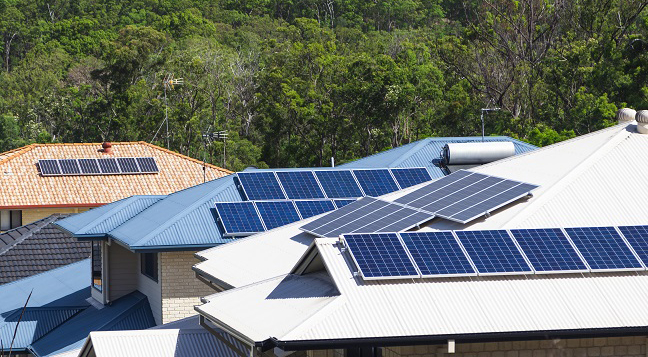-
Home
-
Media and news
-
Blogs
- The cost conundrum - it's time for affordable, energy efficient housing
The cost conundrum - it's time for affordable, energy efficient housing
Some of the most challenging cases I encounter working independently with consumers and the energy and water industry, are those related to affordability. In an environment of falling complaint numbers where fewer customer complaints are making it to the Ombudsman’s office, affordability stands out as the key issue that won’t going away.
The Energy & Water Ombudsman NSW’s (EWON) 2015/2016 Annual Report released today shows affordability continues to feature strongly in our work, with 6,644 of the complaints received in 2015/2016 involving payment difficulties, debt collection and/or disconnection or restriction of supply.
The issue of energy, and to a lesser degree water, affordability really resonate this week, when all Australians are being encouraged to organise or take part in an activity to highlight or work to overcome issues of poverty and hardship, as part of Anti-Poverty Week.
Two and half million Australians (13% of the population) live in households experiencing financial stress. Some people simply can’t afford to pay their utility bills – one in four households in fact. The problem affects people who are working as well those who are unemployed.

Fortunately, we have come a long way in dealing with affordability. There is a range of government rebates or vouchers available to assist people with energy and water costs. All energy and water providers must offer payment plans to allow customers to pay off their accrued debt over time, and most providers now have hardship/affordability programs.
Customers are increasingly tapping into these programs to manage their energy debt. There were over 85,000 electricity customers in NSW on payment plans in March 2016, a 10% increase since June 2015, and a 40% increase since June 2014. Around 20,500 NSW gas customers were on a payment plan at the same time, an increase of 15% on June 2015, and a 94% increase on June 2014.
Close to 24,000 electricity customers were on hardship programs in March 2016, up 31% from June 2014. The number of gas customers on hardship programs increased by 68% from June 2014 to 6,657.
Unfortunately, the availability of payment plans and hardship programs has not led to fewer customers being disconnected from supply. The Australian Energy Regulator’s disconnection figures released to date show NSW disconnections for 2015/2016 are likely to reach 32,000, as they did in 2014/2015. While most quickly reconnect through family loans, payday lenders and forgoing food, others may experience a longer term off supply.
Our casework indicates that complaints about energy or water bills are most often just one aspect of significant family or housing stress. This is echoed in St Vincent de Paul’s (Vinnies) ‘Households in the dark’ report published earlier this year.
“Our research explores residential disconnections across Australia and highlights how industry changes, higher bills and entrenched poverty contribute to NSW’s high disconnection rate,” Vinnies NSW CEO Jack de Groot says.
The Vinnies’ research also shows that smaller households in rural and regional NSW experience the highest disconnection levels. Western Sydney residents too face a much higher rate of disconnection than their inner city counterparts.
The sad reality is that those who can least afford it, have the highest energy costs. Their homes are often poorly insulated and their heaters can be the cheapest to buy but the biggest electricity guzzlers. I’ve seen this first hand in my visits to remote Aboriginal communities where extreme heat in summer and cold in winter and poorly maintained social housing often result in quarterly electricity bills of $2,000 or more.
This brings us to the nub of it – the adequacy of quality, affordable housing. Housing NSW estimates there are 60,000 applicants on their public housing waiting list, which has extended to a wait time of over 10 years in areas of greatest need. Further, ageing housing stock tends to have poor energy efficiency.
This suggests governments are facing a ‘cost conundrum’, whereby lower spending on quality social housing leads to higher investment in energy payment assistance and even healthcare. The solution lies in high quality, energy efficient housing stock that uses new technology like renewable energy and smart meters. Encouragingly, energy providers are exploring partnerships with social housing agencies in an effort to bring about change.
Vinnies has thrown a challenge to the government. There are urgently calling for two things – an increase in social housing dwellings and a change to affordable housing planning laws.
“This week, during Anti-Poverty Week, Vinnies will be launching a petition calling on the NSW Government to change planning laws so that at least 15% of new residential developments are set aside for affordable housing where rent is less than 30% of income,” Mr de Groot explains.
“This will require a significant investment in the construction of at least 25,000 new dwellings in 10 years. It is part of our comprehensive ‘Right to Home’ campaign to address issues around housing affordability.
“If we can get 10,000 signatures then the petition can be brought to Parliament for action to be taken. Our members are taking it to their local communities to get their support and signatures.”
EWON supports Vinnies wholeheartedly and also calls for collaborative partnerships between industry, governments and community agencies to invest in energy efficient, affordable housing that extend the benefits of new, low-cost energy products and services to vulnerable consumers. These benefits are available to those who can afford them. Let’s not lose the opportunity to extend them to those who need them the most.
Janine Young
Ombudsman
Energy & Water Ombudsman NSW
For more information or to arrange an interview with the Ombudsman, contact:
Mia Lauzé, Manager Communications - 0408 602 503 / mial@ewon.com.au

